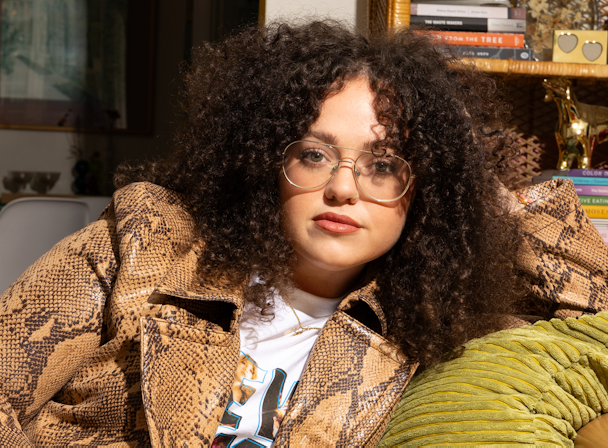What does a cultural strategist actually do? Anna Pompilio of Marks explains
As part of our series demystifying the roles that run the industry, this week we explore what a senior cultural strategist really does. Anna Pompilio of brand design shop Marks explains.

Anna Pompilio is a senior cultural strategist at Marks / Marks
I’ve been at Marks for about two years, but I’ve been in this world under different titles for around 10. I went to school for fashion design and long story short, I'm not very good at sewing and I don’t really like it. I interned at a few places when I was in college, including BCBG in Los Angeles and Fossil in Dallas, and would help their trend teams research things like the ‘dad sneaker.’ I liked it, but wanted to do it in a way that felt more meaningful and wasn’t just about fashion. So, I pivoted to trend forecasting.
I worked at an agency called LPK as a trend forecaster and, from there, transitioned into a brand strategist role. Brand strategy and trend forecasting hold hands, so, at Marks, I work on the fusion of those two things.
Advertisement
When I first started this, probably 2016 or 17, we had an ask from a large corporation that made a lot of beauty products. They were struggling to meet millennial women, women who weren’t buying the same kind of shit their moms had bought. Their products looked stodgy and their audience wasn’t interested.
So, we looked into millennial attitudes and beliefs and socio-cultural trends. We looked into emerging aesthetics in beauty; at the time, Glossier was really big and that was a shift from the old Olay powder-pink packaging. We even looked at overarching category stuff: how do people feel about brands in general? At the time, that meant no BS branding and a brand that stood for something.
Advertisement
We take all those inputs and tie them up in a neat package so that if you want to appeal to this woman (or whoever), you need to hit this, this and this. We’ll put that into a tidy deck with directions to show them these thematic spaces where they, as a brand, can play and talk to that consumer in a way that doesn’t feel disingenuous or insincere.
You can’t just rely on your phone. We look at magazines, at books, at music. In a world of algorithms that are tailored to us as individuals, we’re trying to take new methods to broaden our horizons so that we’re actually getting well-rounded information. We’ll reach out to influencers in a specific space, or we’ll gather focus groups together for insights.
Suggested newsletters for you
An example I love is vitamins. We have all these vitamins that went from looking like granola with fruit on the package to hot pink or blue with really cool graphic designs. We tracked that trend as it was happening because people were looking for something that didn’t feel as intimidating and because brands were looking to the beauty category because it’s pretty.
That’s kind of the work I do on a day-to-day basis – trying to kind of make those connections that inform the future.
There’s a lot of work that doesn’t make it out into the world. Recently, we did a project for a big beverage company; they came to us and wanted us to inform new, cool stuff they could do in the next three to five years, so they flew us to their offices and we put on a three-day trends workshop.
We knew that they were trying to appeal to a younger consumer, but it was alcohol, so not too young. If you’re inspiring innovation and future products, you pull from the fringes. We know they’re not going to go 0-60 to IV drip alcohol or whatever.
But we pulled together all these stimuli and put them in buckets. For example, one of them was ‘healthy hedonism.’ We’d seen a lot of beer brands claiming to have electrolytes or added vitamins or they had fewer carbs. Something that puts a health halo across it.
We might do worksheets or exercises to get the client thinking about what their brand’s ‘freaky flag’ product is or who their accidental audience is. For example, Carhartt makes workmen’s clothes but it’s become very fashionable.
Everyone has the trend muscle. Everyone is able to do this. But it’s a different way of thinking – a learned skill – and I love being able to teach people that.
Once you start asking why something is happening – why quiet quitting is happening, or whatever – you start to learn more interesting things about people. It’s a good skill to have in life, not just at work.
The top tip I would have for anyone is to break your own algorithm. Try and seek out information that’s different than you, in work and in life.
